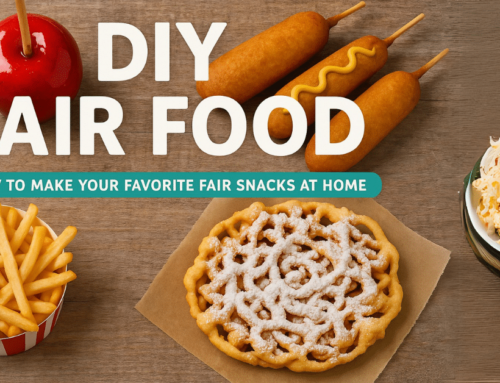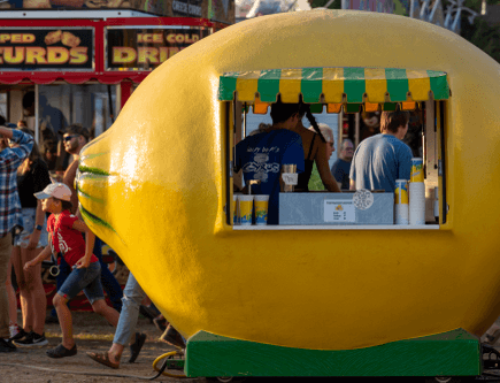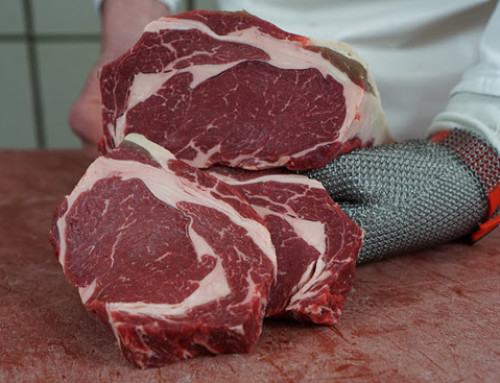Competitive eating has grown from humble county fair contests into a global phenomenon with dedicated athletes, major sponsorships, and millions of viewers. Whether you’re fascinated by the spectacle or considering taking on a challenge yourself, this comprehensive guide explores the world of competitive eating and the most outrageous food challenges that push human limits.
The Evolution of Competitive Eating
The history of competitive eating traces back to traditional harvest festivals and county fairs, where eating contests were friendly community events. What began as informal pie-eating races has developed into a structured sport with professional competitors, strict rules, and substantial prize money.
Nathan’s Famous Hot Dog Eating Contest, which began in 1916, marks one of the earliest documented American eating competitions. The contest was initially a small promotional event but has grown into the Super Bowl of competitive eating, broadcast globally on ESPN with millions of viewers each year.
The sport underwent a significant shift in the late 1990s with the formation of the International Federation of Competitive Eating (IFOCE), now known as Major League Eating (MLE). This organization established professional standards, safety protocols, and a ranking system that helped turn competitive eating into a legitimate sport.
Today’s competitive eating landscape includes:
- Professional competitions organized by sanctioning bodies
- Restaurant challenges offering prizes for completion
- Television shows dedicated to food challenges
- Social media personalities building careers around extreme eating
- Food tourism centered on famous eating challenges
Major League Eating: The NFL of Competitive Eating
Major League Eating serves as the governing body for professional eating contests worldwide. Founded in 1997, MLE oversees approximately 80 eating competitions annually with combined prizes exceeding $500,000.
The organization maintains official records, ranks competitive eaters, and ensures safety standards are upheld at sanctioned events. Top-ranked eaters sign exclusive contracts with MLE, similar to athletes in other professional sports.
Professional eaters train rigorously for competitions. Joey Chestnut, the current hot dog eating champion, prepares by:
- Expanding stomach capacity through controlled stretching exercises
- Building jaw strength through specialized training
- Practicing specific eating techniques for different food types
- Adhering to strict diet regimens between competitions
- Studying the optimal moisture level for different foods
The most successful competitors often earn six-figure incomes through competition winnings, endorsements, and appearance fees. The growing popularity of the sport has attracted mainstream sponsors looking to connect with the millions of fans who follow competitive eating.
The Nathan’s Hot Dog Eating Contest: America’s Eating Olympics
The annual Nathan’s Famous Hot Dog Eating Contest represents competitive eating at its highest level. Held every Independence Day at the original Nathan’s location on Coney Island, this event has become an American institution.
Joey Chestnut currently dominates the men’s division, holding the world record with 76 hot dogs and buns consumed in 10 minutes (set in 2021). In the women’s division, Miki Sudo has claimed multiple titles, with her record standing at 48.5 hot dogs.
What makes this event particularly significant is its cultural impact. The competition receives extensive media coverage, with ESPN broadcasting it live to millions of viewers. The winners become minor celebrities, appearing on talk shows and receiving national recognition.
Beyond the fame, the prize money has increased substantially. The current prize purse totals $40,000, with $10,000 going to the winner – a significant jump from the modest prizes of earlier decades.
International Food Challenges: A Global Phenomenon
While American competitions often focus on quantity, food challenges around the world reflect diverse cultural approaches to competitive eating.
Japan’s Eating Culture
Japan has a rich tradition of competitive eating, known as “food battles” or “food fights.” Their approach differs from Western competitions:
- Japanese contests often emphasize speed over quantity
- Competitors face off in head-to-head tournaments
- Traditional foods like soba noodles and rice balls feature prominently
- Technique and precision are highly valued
Takeru Kobayashi, a Japanese competitive eater, revolutionized the sport when he shattered the hot dog eating record in 2001, introducing new techniques that changed competitive eating forever.
European Food Challenges
Europe contributes its own unique challenges to the competitive eating landscape:
In England, the “Breakfast Challenge” dares participants to consume massive traditional English breakfasts with eggs, bacon, sausages, beans, toast, and more – often totaling over 5,000 calories.
Spain’s La Tomatina festival, while not strictly a food competition, involves thousands of participants in the world’s largest food fight, hurling over 150,000 pounds of tomatoes.
Germany’s bratwurst challenges test competitors’ abilities to consume massive quantities of sausage, often paired with beer for added difficulty.
Restaurant Food Challenges: Finish It and It’s Free
Restaurants worldwide have capitalized on the competitive eating trend by creating in-house challenges that offer rewards for completion. These challenges serve as both marketing tools and customer attractions.
The Heart Attack Grill in Las Vegas exemplifies this approach with its Quadruple Bypass Burger. Weighing in at nearly four pounds, this monstrosity contains four half-pound beef patties, multiple bacon strips, and cheese. Customers who finish the burger get wheeled out to their car in a wheelchair by servers dressed as nurses – a theatrical touch that adds to the experience.
Big Texan Steak Ranch in Amarillo, Texas offers one of America’s most famous food challenges: consume a 72-ounce steak plus sides in under an hour, and it’s free. Since its inception in 1960, thousands have attempted this challenge, with only about one in six succeeding.
What makes restaurant challenges effective marketing tools:
- Social media exposure when participants share their attempts
- Local media coverage generating free publicity
- Word-of-mouth marketing from participants and spectators
- Repeat business from customers returning to attempt challenges
- Merchandise sales related to challenge completion
For restaurants considering implementing food challenges, success factors include:
- Creating a challenge that’s difficult but occasionally winnable
- Offering meaningful rewards for completion
- Documenting winners through photos or a “wall of fame”
- Ensuring food safety throughout the challenge
- Building community around challenge attempts
The Science and Safety of Extreme Eating
Competitive eating pushes the human body to its limits, raising important health and safety questions. The competitive eating community has responded by implementing safety measures and studying the physiological aspects of extreme consumption.
From a scientific perspective, professional eaters develop several adaptations:
- Expanded stomach capacity that can hold significantly more food
- Reduced sensitivity to feelings of fullness
- Faster digestion rates than average individuals
- Enhanced mental fortitude to overcome physical discomfort
However, medical professionals caution about potential health risks:
- Stomach rupture (extremely rare but possible)
- Choking hazards during speed-eating
- Long-term effects on metabolism and digestion
- Psychological relationships with food
Major League Eating addresses these concerns through comprehensive safety protocols:
- Medical staff present at all sanctioned events
- Age restrictions (minimum 18 years old)
- Competitor screening for pre-existing conditions
- Strict rules against unhealthy training practices
For casual participants attempting restaurant challenges, medical experts recommend:
- Consulting a doctor before attempting extreme eating
- Staying hydrated throughout challenges
- Listening to your body’s signals
- Avoiding competitive eating if you have existing digestive issues
- Returning to normal eating patterns immediately afterward
Digital Age Food Challenges: From Mukbang to Challenge Videos
The internet has created new platforms for food challenges that blur the line between competition and entertainment. YouTube channels dedicated to extreme eating attract millions of viewers, with top creators earning substantial incomes from their content.
South Korea’s “mukbang” phenomenon – where hosts consume large quantities of food while interacting with viewers – has spread globally. These livestreams satisfy viewers’ curiosity about extreme eating without requiring participation.
Social media challenges regularly go viral, creating new food trends almost overnight. The cinnamon challenge, ghost pepper challenge, and others have drawn millions of participants despite potential health risks.
What drives the popularity of digital food challenges:
- The vicarious experience of watching others push their limits
- Community building among viewers and participants
- The element of spectacle that draws attention
- The accessibility compared to formal competitions
The Future of Competitive Eating
As competitive eating continues to evolve, several trends are emerging that will shape its future:
Plant-based food challenges are gaining popularity as dietary preferences shift. Competitions featuring meat alternatives and vegan options are attracting new audiences concerned about sustainability.
Technology integration through live stats, biometric tracking, and digital leaderboards is enhancing the viewer experience at major competitions.
International fusion is occurring as global eating styles blend. Competitions now routinely feature foods from multiple culinary traditions, reflecting our increasingly connected world.
For those inspired to explore competitive eating, whether as spectators or participants, the world of food challenges offers a unique blend of sport, entertainment, and cultural experience. While not everyone can consume 76 hot dogs in 10 minutes, the spectacle continues to fascinate and the community continues to grow.
Key Takeaways for Food Challenge Enthusiasts
- Start small if attempting challenges, building stomach capacity gradually
- Research venue reviews before traveling to attempt famous challenges
- Watch videos of successful competitors to learn techniques
- Consider the health implications before participating
- Enjoy the community aspect of competitive eating events
Whether you’re watching from the sidelines or stepping up to the plate, food challenges represent a fascinating intersection of human ability, entertainment, and culinary culture. As long as there are records to break and appetites to test, competitive eating will continue pushing the boundaries of what’s possible when food becomes sport.
Love crazy food challenges? 👉 Follow us for more wild eating content every week!











Leave A Comment